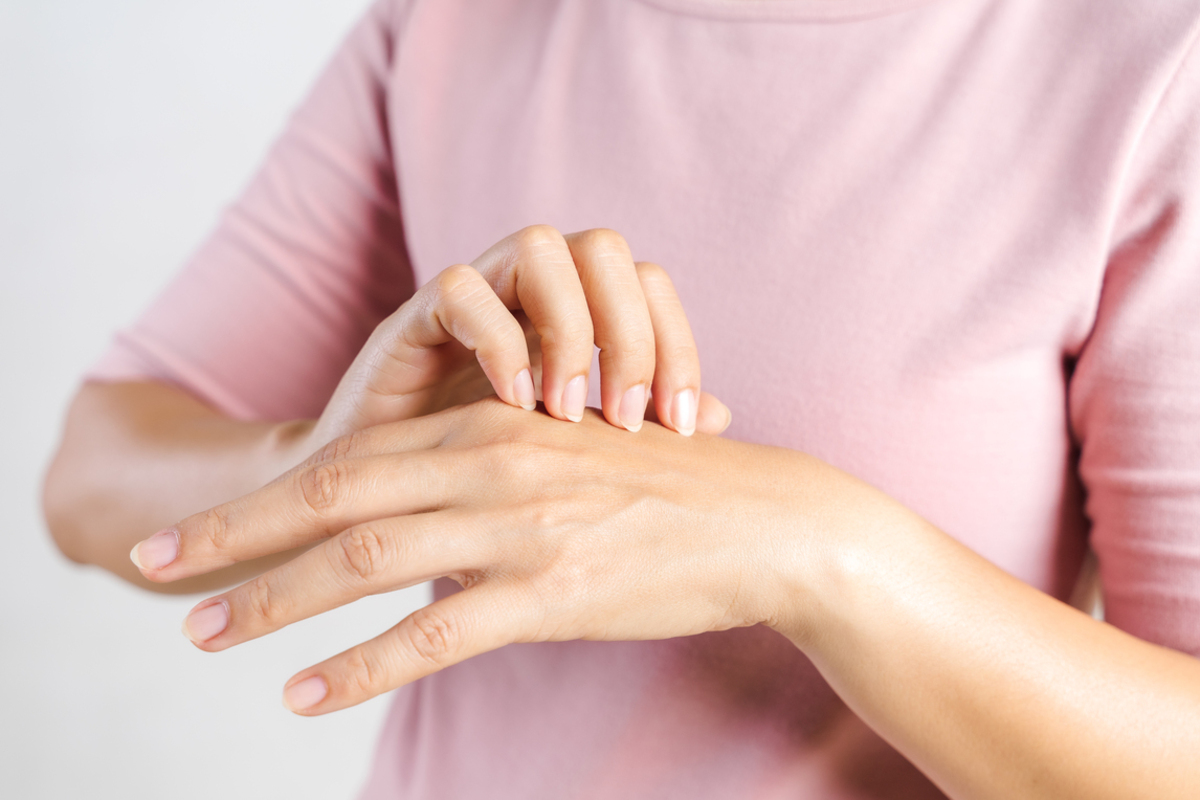Nearly every person living with HIV will have at least one skin rash related to their condition during their lifetime. In some people, these rashes could even be the initial presenting complaint that leads to the discovery of the disease.
In the early days of the AIDS epidemic in the 1980s, skin lesions associated with HIV were recognizable as hallmarks of undiagnosed infection, due to the absence of early diagnostic tools and effective treatments at the time.
Even though skin rashes are decreasing with the use of HAART, it is still important for patients and caregivers to recognize some common interesting types, to better understand why they happen and how to handle them.

1. Primary HIV infection
Up to two-thirds of people who get infected with HIV develop symptoms of acute infection within two to four weeks after acquiring the virus. These may include a wide variety of symptoms such as generalized body pains, joint pain, fever, enlarged lymph nodes, nausea, vomiting, and a skin rash. The skin rash is usually flat, red in color, and with multiple small bumps. It can cover areas of the trunk, hands, and feet. The rash typically fades on its own within a couple of weeks.
2. Fungal infections
Fungal infections are by far the most frequent cause of skin rashes in HIV-positive individuals. Skin rashes caused by fungal infections are highly variable in appearance and location, depending on the causative organism. One famous species of fungus, called “Tinea”, or ringworm, is almost always the culprit. Different types of ringworm can infect different parts of the body, causing itchy and scaling rashes in between the toes, around the nails, scalp, or in the groin area.
3. Molluscum contagiosum
This skin lesion is typically caused by a poxvirus that infects human skin cells, causing the appearance of small nodules that are typically depressed in the middle (termed “central umbilication”). The nodules usually appear in the face or groin area and are characteristically hard to treat. The doctor may choose to remove them by conventional surgical excision or by cryotherapy. In some cases, the initiation of HAART alone can make the lesion disappear.
4. Varicella Zoster
The viral infection responsible for chickenpox in children can also cause a painful skin rash in people with disturbed immunity, such as those infected with HIV. Paradoxically, however, improving immunity with HAART has increased varicella-zoster reactivation in patients receiving treatment.
The rash caused by the Varicella Zoster virus is typically itchy, has fluid-filled small blisters, and usually involves a well-defined area of the body, such as a single side of the trunk or face. Treatment with antiviral medications such as acyclovir can help alleviate symptoms and shorten the duration of the rash. More severe forms of infection with this virus can damage the brain, lungs, or liver, and would require more aggressive treatment.
5. Human papillomavirus
Human papillomavirus is another viral infection that can cause a variety of skin lesions in people with or without HIV. The virus typically causes warts that may appear in the groin area, hands or feet, face, or even inside the mouth or eyes in severe cases. Patients with lower CD4 counts are likely to have a more severe infection. Warts in the genital and anal regions, called condylomata acuminate, can grow into large sizes, and may even become cancerous in some people. Treatment is usually done by removing the warts with any of the different available techniques, such as cryotherapy, surgical excision, or curettage.
6. Eczema
Another name for eczema is “atopic dermatitis”. Almost half of all people living with HIV will encounter this condition at some point. The rash is typically dry, red, itchy, and can involve any part of the body. Atopic dermatitis is not an infection, and is mostly caused by abnormal inflammation of the skin in response to contact with certain allergens or irritants. Treatment usually involves the use of moisturizers and certain medical ointments and creams, as well as avoiding any possible products that may damage the skin.
7. Seborrheic dermatitis
Another common rash that affects people with HIV is seborrheic dermatitis, more commonly known as dandruff. It is still not clear what exactly leads to this condition, but causes may include stress, dry weather, a disrupted immune response, and yeast infection. The rash can involve areas like the scalp, chest, below the breasts, skin folds of the arms and legs, or the buttocks. Good skincare and the use of medical ointments can relieve the rash most of the time.
- Photo courtesy of SteadyHealth
- Pennys NS. Skin manifestations of AIDS. London: Martin Dunitz,1995.
- Ho KM, Wong KH. Dermatologic manifestations in HIV disease. In Chan KCW, Wong KH, Lee SS, editors. HIV Manual 2001, pp231-245.
- emedicine.medscape.com/article/1133746-overview#a5


Your thoughts on this